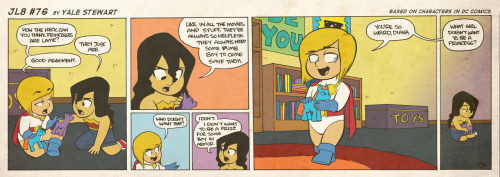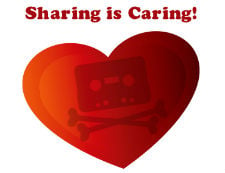 Ever since I self-published the ebook of “Why Are You Atheists So Angry? 99 Things That Piss Off the Godless” — and ever since I got the print edition published by a conventional small-press publisher, Pitchstone — other writers have been asking me for advice about self-publishing, conventional publishing, and which they should pursue.
Ever since I self-published the ebook of “Why Are You Atheists So Angry? 99 Things That Piss Off the Godless” — and ever since I got the print edition published by a conventional small-press publisher, Pitchstone — other writers have been asking me for advice about self-publishing, conventional publishing, and which they should pursue.
I have become a serious convert to self-publishing, and am a big booster of it. But I also recognize that the success of “Why Are You Atheists So Angry?” is something of an outlier in the self-publishing world, and that this avenue isn’t for everyone. So I want to do a bit of a public service announcement for other writers, and lay out what I see as the major advantages and disadvantages of self-publishing versus conventional publishing.
Advantages to self-publishing:
1) You get to keep most of your money. This is not a trivial matter. Especially if you have serious ambitions of being a full-time or even part-time professional writer.
2) You get to be in control. You control publicity. You control design. You get to write your product description. An editor won’t make you change that beautiful turn of phrase just because it’s not Chicago Manual of Style. You decide cover art (and this is NOT trivial: I’ve seen authors weep tears of blood and threaten to quit writing altogether because a boring or butt-ugly cover got forced on them.) If you are a giant control queen like me, this is a big freaking deal.
And you’re not at the mercy of the whims and weathers of your publisher. In conventional publishing, if your favorite editor who loves your work and totally gets your market suddenly gets fired, or moves on to greener pastures? If there’s a buyout or a change in ownership, and the new ant overlords hate your book and decide to bury it? If some dolt in the marketing department decides that your biting analysis of the history of religious apologetics can be sold to the burgeoning tween market if they just slap a vampire on the cover? If your editor goes mad and sets fire to their office because you accidentally re-wrote the Necronomicon and reading your book opened a portal in their brain to the demon underworld? (I hate it when that happens!) You’re pretty much hosed. Depending on your contract, there’s either little you can do, or nothing you can do. When you’re publishing yourself, you can publish your demonic ravings on your own timetable, and nobody can stop you. NOBODY! BWA HA HA HA HA HA HA! The world is DOOMED!
3) It is fast, fast, fast. There is no way I could have gotten “Why Are You Atheists So Angry?” out in time for the Reason Rally if it had been published conventionally. A small press will be more nimble than a big house…. but they’ll still be significantly slower getting your book out than you will yourself. If for no other reason, a conventional publisher actually has to physically print a big batch of physical books. (I know, right? Are we living in the Dark Ages or something?) And that takes time that ebook publishing and print-on-demand don’t. If you have an idea that’s timely, if there’s a wave you want to ride, self-publishing means you can get your book out like lightning. Once it’s written, you format it or pay someone to format it; you go to Kindle/ Nook/ Smashwords/ CreateSpace/ Lulu/ whatever; you hit the “Publish” button. Done.
4) Did I mention that you get to keep most of your money?
5) The weird little truth that conventional publishers are beginning to freak out about: There really isn’t a whole lot that conventional publishers can do for you that you can’t do for yourself. There are some things — I’ll get to those in a sec — and depending on your situation, they may not be trivial.
But here’s the thing. A conventional publisher can give you a promotion budget… but they probably won’t. Or they won’t give you much of one. They probably won’t even consider publishing your book if you can’t do the lion’s share of publicity yourself. A conventional publisher can get your book into bookstores and mainstream book distribution channels… but bookstore sales are an ever-decreasing percentage of the book market. Online sales and ebook sales are kicking bookstores’ asses. That sucks giant donkey dicks: I love bookstores, I want my book in bookstores, any bookstores who want to carry “Why Are You Atheists So Angry?” should contact either Pitchstone (the publisher) or Last Gasp (the current distributor). But it’s a reality that writers need to accept.
Honestly? The publishing world kind of screwed itself. The big houses especially. They kept cutting back and cutting back and cutting back on what they give to authors, and expecting authors to do more and more and more of the heavy lifting themselves. And then self-publishing books started to become cost-effective, and blogging/ citizen journalism/ other electronic self-publishing forms started getting credibility, and authors started saying, “So I’m working with you… why, again?” If you’re a writer, that’s a question you should seriously be asking.
And, of course, all this is assuming that you can, in fact, get a contract with a conventional book publisher… which has always been hard, and is getting harder all the time.
So if publishers can’t do that much for you that you can’t do for yourself… why not just do it yourself, and keep most of your money?
Advantages to conventional publishing:
1) With self-publishing, you have to pay for everything yourself: formatting, cover art, review copies, ISBNs, promo cards, etc. You may be able to get help with some of this, free or cheap: from friends, from fans, from work-trade agreements. But not all of it. If you don’t have the cash/ resources to absorb these costs upfront and take the risk that it may not pan out, it may well be worth it to you to have a conventional publisher absorb those costs instead.
2) With self-publishing, you have to do everything yourself. This is the flip side of “you get to be in control.” You have to do publicity, promotion, dealing with formatters, acquiring ISBNs — everything — all by yourself, or with the help of friends and colleagues. That doesn’t just take money… it takes time. And it takes motivation. If you’re considering self-publishing, ask yourself: “Do I really have the time and energy to deal with all that boring business bullshit?” If your answer is a horrified, nauseated shudder, conventional publishing might be right for you.
3) Having an editor is often a good thing. If you self-publish, your non-existent editor won’t make you change that beautiful turn of phrase just because it’s not Chicago Manual of Style… but they also won’t catch that horrendously stupid mistake you made. If you self-publish, it’s an excellent idea to hire a copy editor — but then you have to add that to your upfront costs. (Or do what I did, and marry one.)
4) Being a self-publisher means being a publisher. And that means understanding the publishing business. I had a big leg up when I self-published “Why Are You Atheists So Angry?”: I’d been working in the publishing industry in one capacity or another (for book publishers, book distributors, retail mail-order companies working with book publishers and distributors, magazine publishers, newspaper publishers) for decades. I knew the business — the small, quirky, indie end of the business, anyway — very well indeed, and I had a working familiarity with the bigger side of the business as well. If you’re self-publishing and you don’t have that knowledge, you’re going to have to acquire it, or learn it on the fly.
On the other hand… some publishers don’t seem to understand the publishing world very well, either. The big ones especially. The degree to which big book publishers have utterly failed to adapt to the electronic world astonishes me. Look at simple things like, “Your cover art has to look good on a computer screen in thumbnail size,” for fuck’s sake. How hard is that to get right?
5) There is still a certain cred that conventional publishing confers on a writer. And there is still a certain stigma on self-publishing, a whiff of the “vanity press” notion. This is diminishing significantly, and it’s diminishing more and more all the time, but it’s still there. The fact that a professional in the industry decided your work was publishable and sellable does give you a certain cachet. And if you’ve been picked up by one publisher, it increases your chances of being picked up by another.
On the other hand… if you self-publish and your book does well, that increases your chances with publishers, too. It shows that you have a platform, that you’re motivated and engaged in promoting your work, and that your work will sell. And the cred gap between conventional publishing and self-publishing is closing all the time. Also, you may decide that you don’t really care about that cred stuff, if it means you get to control your business and keep more of your money.
Bottom line:
If you’re a highly self-motivated, reasonably well-organized control freak, with the time and resources to put into the project and a good platform for publicizing your book (a blog, a videoblog, a podcast, connections with other bloggers and videobloggers and podcasters, lots of followers on Facebook and Twitter and whatnot), self-publishing is probably a good choice. And if conventional publishers won’t publish your book, self-publishing is an excellent choice. Definitely the way to go.
But if a conventional publisher will publish your book — and if it’s worth making less money and giving up control to have someone else absorb the upfront costs and hassles and boring business end of publishing, and if you’re not a giant control freak like me — then conventional publishing is probably worth it.
Note: “Why Are You Atheists So Angry? 99 Things That Piss Off the Godless” is currently available in ebook form at Kindle, Nook, and multiple formats on Smashwords, including iBooks, Sony Reader, Kobo, Kindle (.mobi), Stanza, Aldiko, Adobe Digital Editions, any other reader that takes the Epub format, Palm Doc (PDB), PDF, RTF, Online Reading via HTML, and Plain Text for either downloading or viewing. All ebook editions and formats cost just $7.99.
You can get the print edition through Last Gasp — wholesale and retail mail-order — through the Richard Dawkins Foundation bookstore, and at the American Atheists online bookstore. (The AA store website is slightly wonky, but if you go there and select “New Products” in the left sidebar [NOT "Newest Items"], it’s right there at the top of the section.) It can also be ordered directly from the publisher, Pitchstone Publishing. (You can also pre-order the print edition through Amazon — but Amazon and most other retailers won’t have the book until the fall.) The print edition is $14.95.
And the audiobook version is available at Audible, iTunes, and Amazon. And yes, I did the recording for it!


 Fair use is an exception to the copyright law that gives authors exclusive rights over their creative works. In passing the limitation, Congress tried to balance the rights of copyright holders with the need of academia, critics, columnists, reporters and researchers to quote other works. Google argued that the snippets it used in search results were protected under the fair-use doctrine. The company did not make whole books available without permission, but instead directed people to where the tomes were available.
Fair use is an exception to the copyright law that gives authors exclusive rights over their creative works. In passing the limitation, Congress tried to balance the rights of copyright holders with the need of academia, critics, columnists, reporters and researchers to quote other works. Google argued that the snippets it used in search results were protected under the fair-use doctrine. The company did not make whole books available without permission, but instead directed people to where the tomes were available.
























 The infamous hacker known as TinKode has been sentenced by a Romanian court, according to
The infamous hacker known as TinKode has been sentenced by a Romanian court, according to 



 Wearing T-shirts with the slogan “Piracy is Illegal”, the movie industry sponsored anti-piracy group ACAPOR
Wearing T-shirts with the slogan “Piracy is Illegal”, the movie industry sponsored anti-piracy group ACAPOR 

 Credit:
Credit:  Credit:
Credit: 










 There's something about typing your thoughts on the internet that makes some perfectly nice people act like jerks. It's not just the anonymity, because even on social networking sites where our identities are displayed to our contacts, arguments often devolve into name calling and bullying.
There's something about typing your thoughts on the internet that makes some perfectly nice people act like jerks. It's not just the anonymity, because even on social networking sites where our identities are displayed to our contacts, arguments often devolve into name calling and bullying.